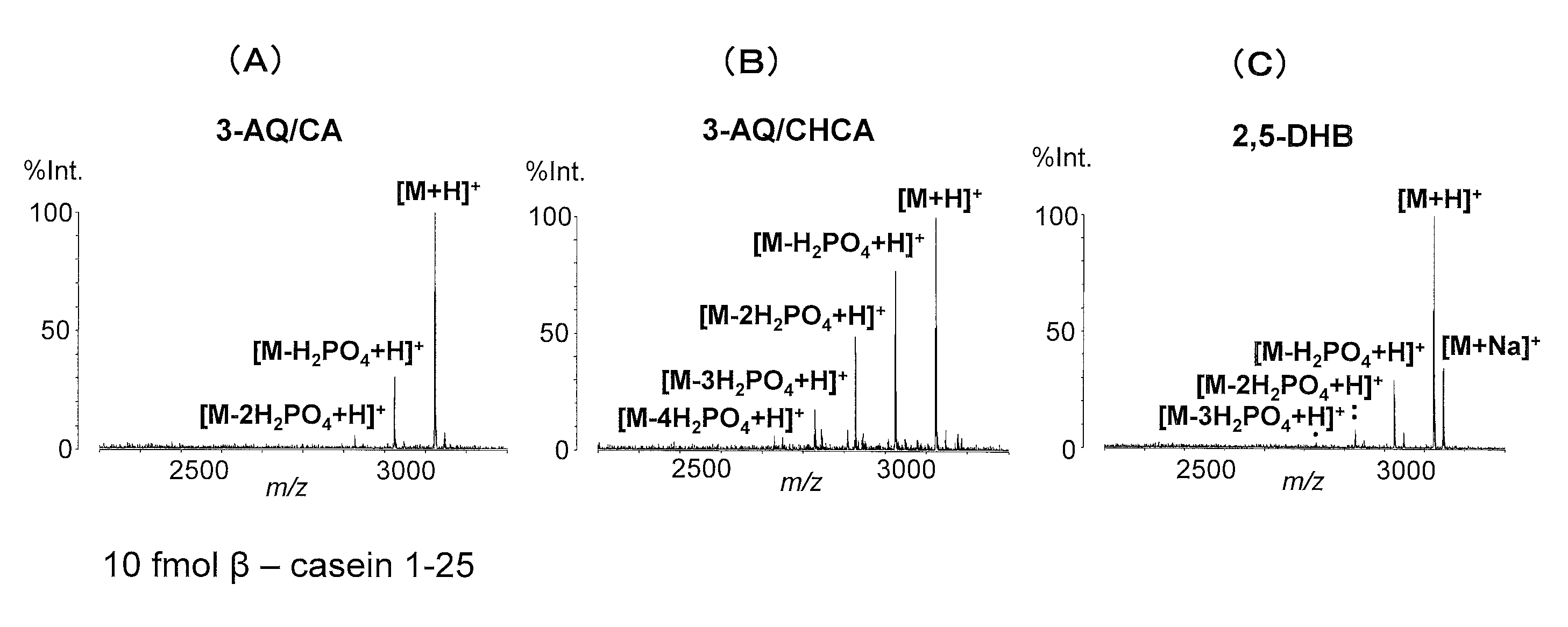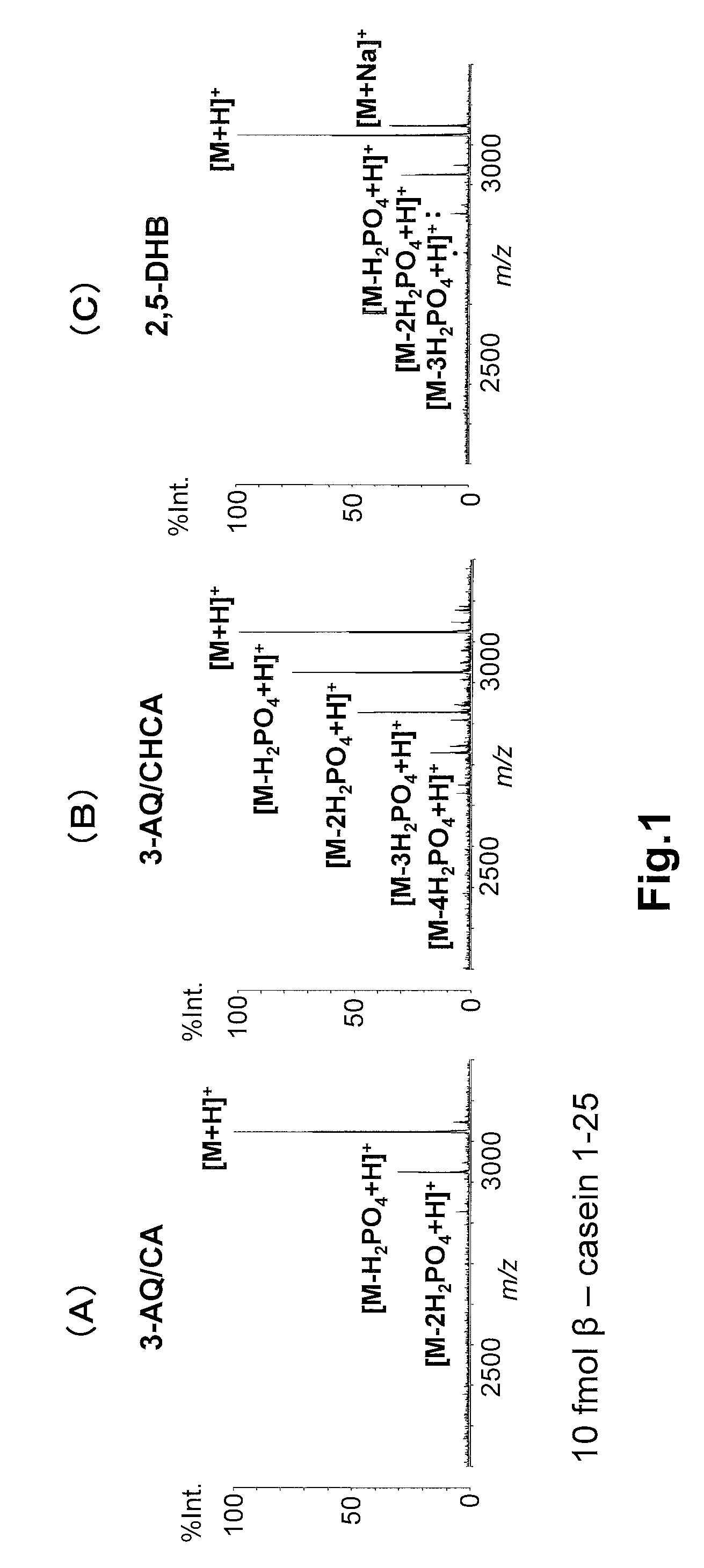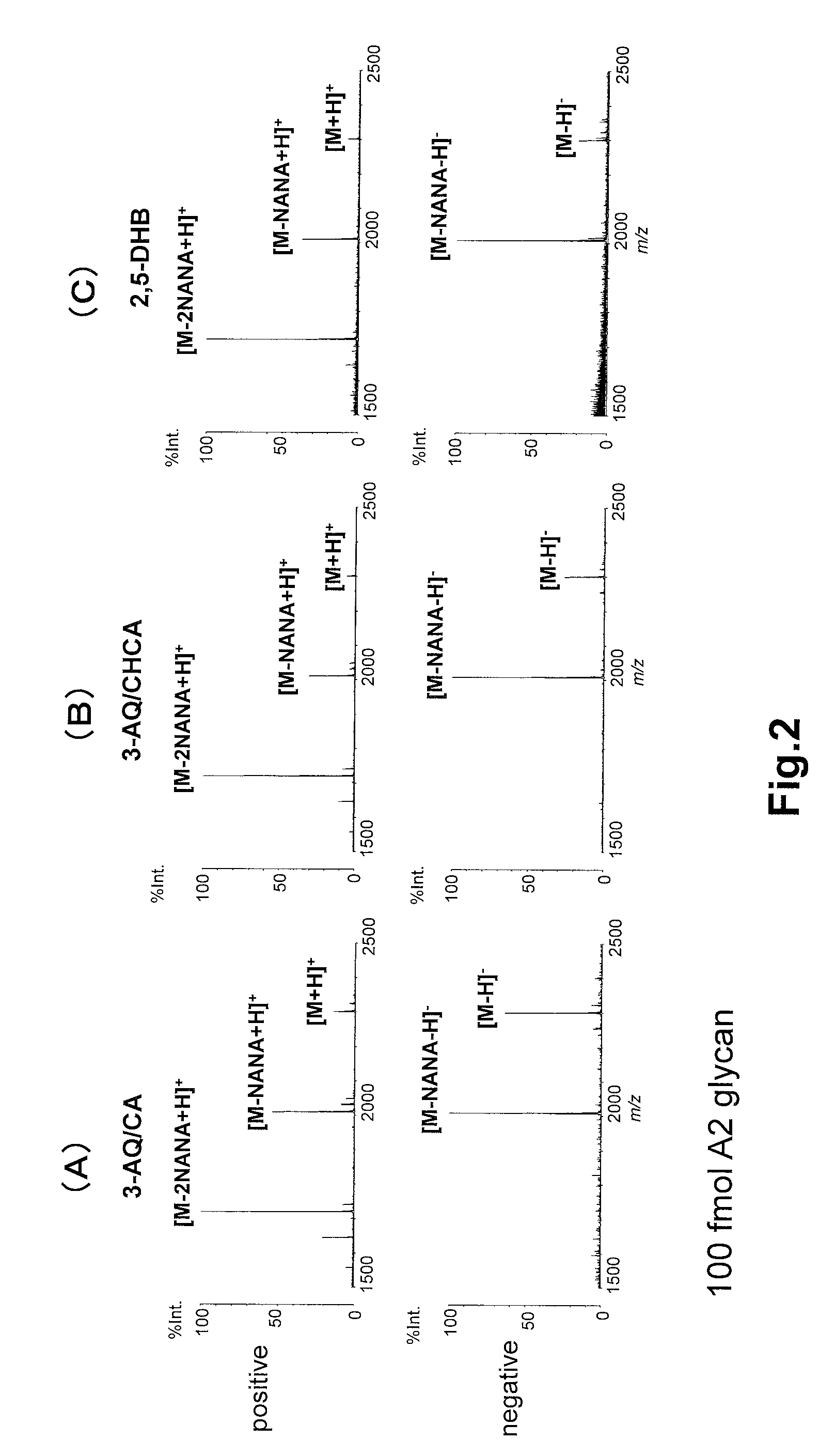Mass spectrometry method of phosphorylated peptides and sugar chains
a mass spectrometry and phosphorylation technology, applied in mass spectrometers, time-of-flight spectrometers, instruments, etc., can solve the problems of insufficient analytical sensitivity, inability to detect molecular-related ions, low ionic strength of molecular-related ions, etc., to suppress the desorption of a phosphate group, high sensitivity, and high ionic strength
- Summary
- Abstract
- Description
- Claims
- Application Information
AI Technical Summary
Benefits of technology
Problems solved by technology
Method used
Image
Examples
example 1
Analysis of Phosphorylated Peptides Using 3-AQ / CA
[0047](1) A 3-AQ solution that contained 100 nmol / μL of 3-AQ and 2 mM ammonium phosphate in an aqueous 50 (v / v) % acetonitrile (ACN) solution, and a CA solution that contained 100 nmol / μL of CA and 2 mM ammonium phosphate in an aqueous 50% (v / v) acetonitrile (ACN) solution were mixed in a ratio of 9:1 (v / v) to obtain a mixed solution. Then, the mixed solution was diluted 10-fold with an aqueous 50% (v / v) acetonitrile (ACN) solution containing 2 mM ammonium phosphate to prepare a 3-AQ / CA matrix solution.
[0048](2) Aqueous 50% (v / v) ACN solutions containing 0.02 fmol / μL to 2,000 fmol / μL of commercially-available phosphorylated peptides β-casein 33-48 and β-casein 1-25 were prepared, respectively, by serially diluting the phosphorylated peptides with the same aqueous 50% (v / v) ACN solvent.
[0049](3) Each of 0.5 μL of the 3-AQ / CA matrix solution prepared in (1) and 0.5 μL of the peptide sample solution prepared in (2) was dropped onto a MAL...
example 2
Analysis of Sugar Chains Using 3-AQ / CA
[0062](1) A 3-AQ solution that contained 100 nmol / μL of 3-AQ and 2 mM ammonium phosphate in an aqueous 50 (v / v) % acetonitrile (ACN) solution, and a CA solution that contained 100 nmol / μL of CA and 2 mM ammonium phosphate in an aqueous 50% (v / v) acetonitrile (ACN) solution were mixed in a ratio of 9:1 (v / v) to obtain a mixed solution. Then, the mixed solution was diluted 10-fold with an aqueous 50% (v / v) acetonitrile (ACN) solution containing 2 mM ammonium phosphate to prepare a 3-AQ / CA matrix solution.
[0063](2) Aqueous solutions containing 0.04 fmol / μL to 4,000 fmol / μL of commercially-available PA-sugar chains NA2 glycan, NA4 glycan, A1 glycan, and A2 glycan (all of which are manufactured by Takara Bio Inc.) were prepared, respectively, by serially diluting the PA-sugar chains with the same water.
[0064](3) The 3-AQ / CA matrix solution prepared in (1) and the sugar chain sample solution prepared in (2) were mixed in a ratio of 1:1 (v / v) (pre-mix ...
PUM
 Login to View More
Login to View More Abstract
Description
Claims
Application Information
 Login to View More
Login to View More - R&D
- Intellectual Property
- Life Sciences
- Materials
- Tech Scout
- Unparalleled Data Quality
- Higher Quality Content
- 60% Fewer Hallucinations
Browse by: Latest US Patents, China's latest patents, Technical Efficacy Thesaurus, Application Domain, Technology Topic, Popular Technical Reports.
© 2025 PatSnap. All rights reserved.Legal|Privacy policy|Modern Slavery Act Transparency Statement|Sitemap|About US| Contact US: help@patsnap.com



